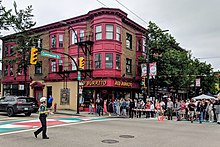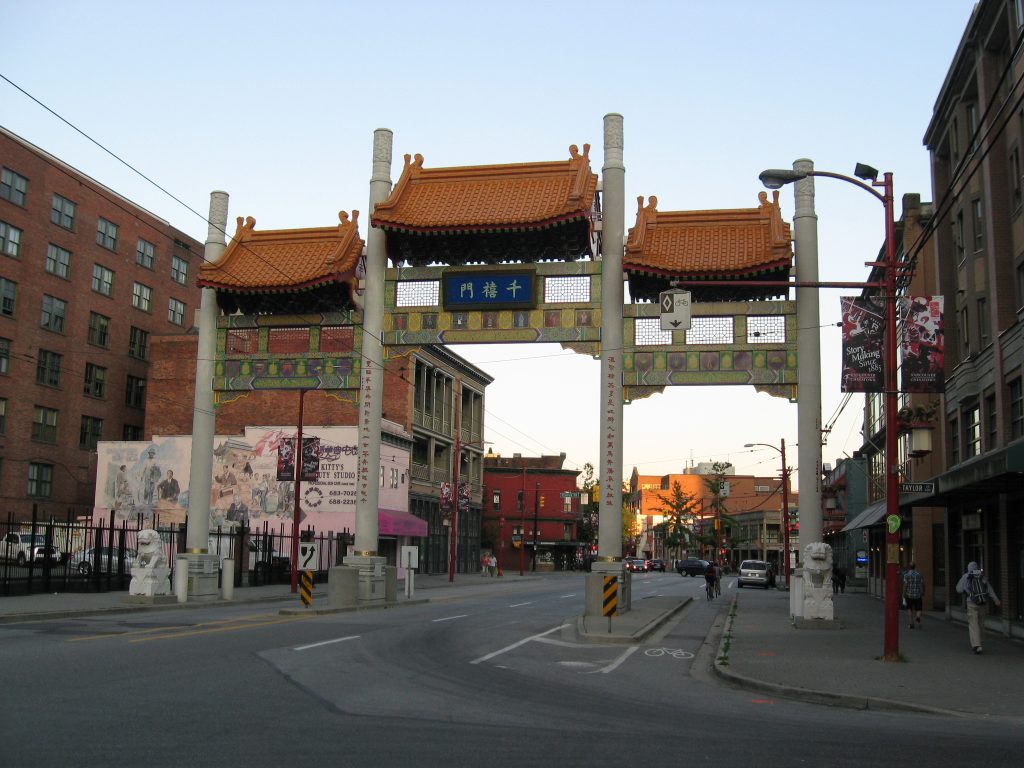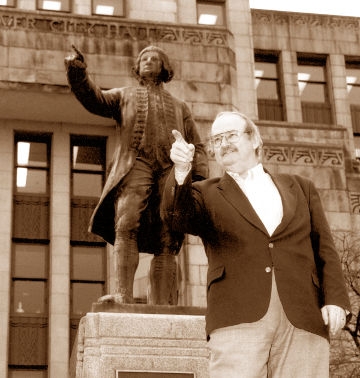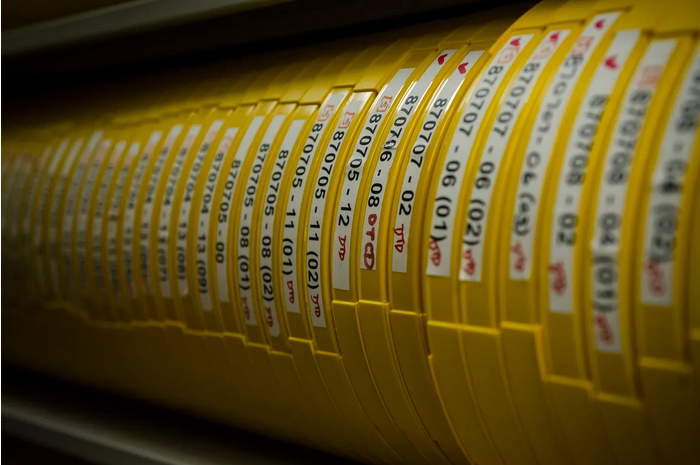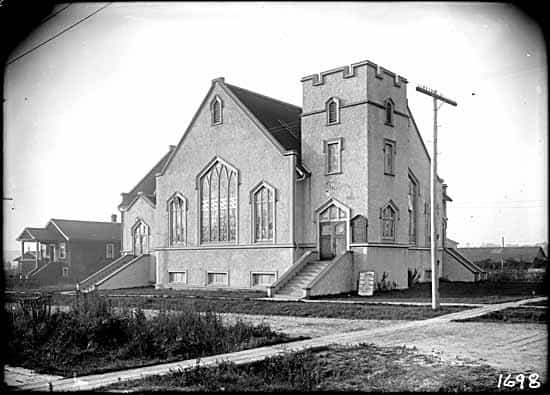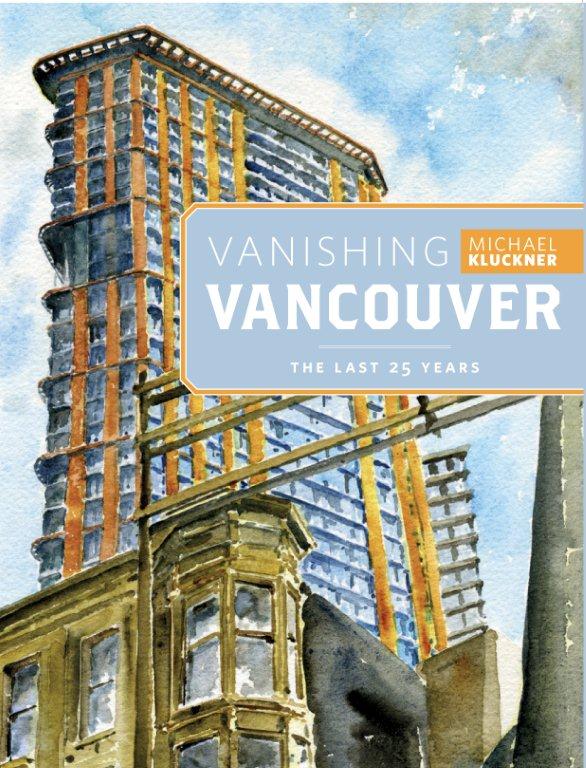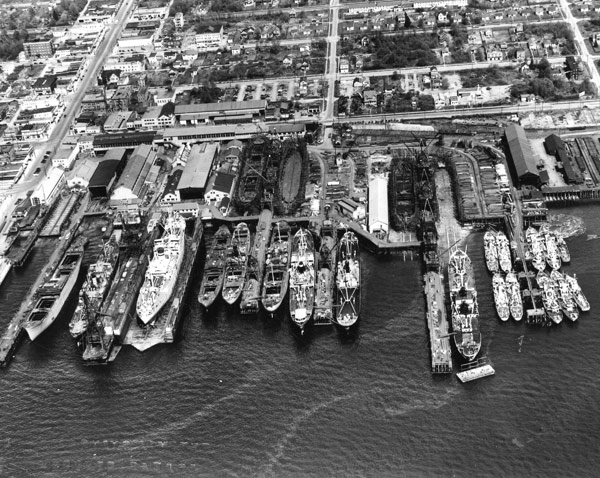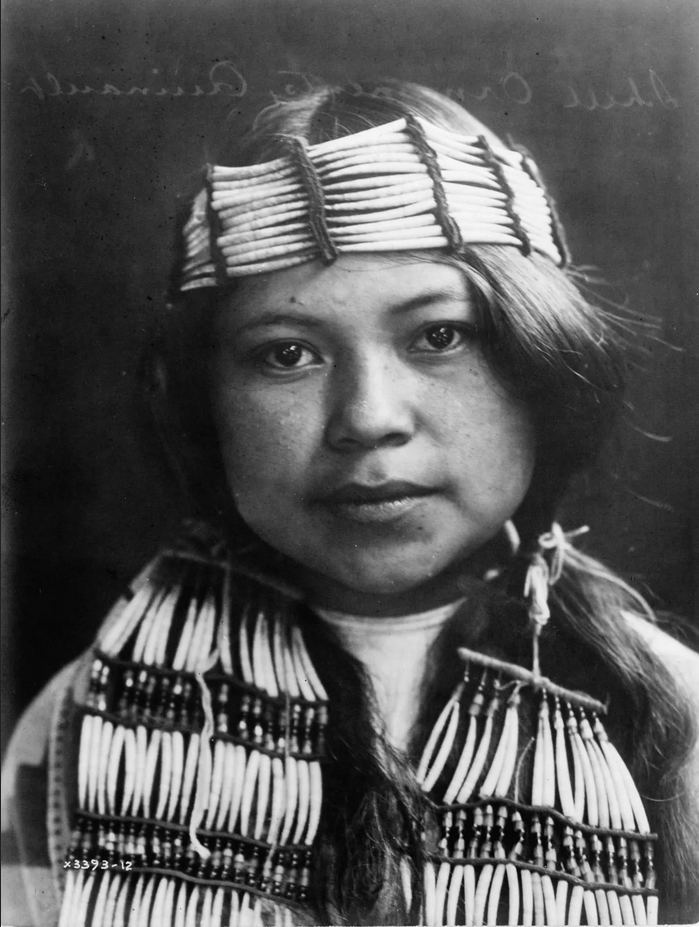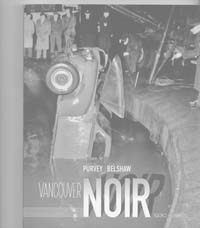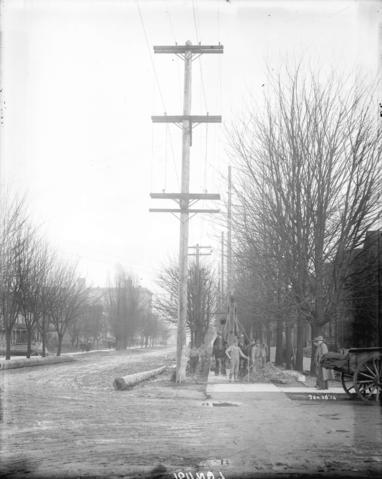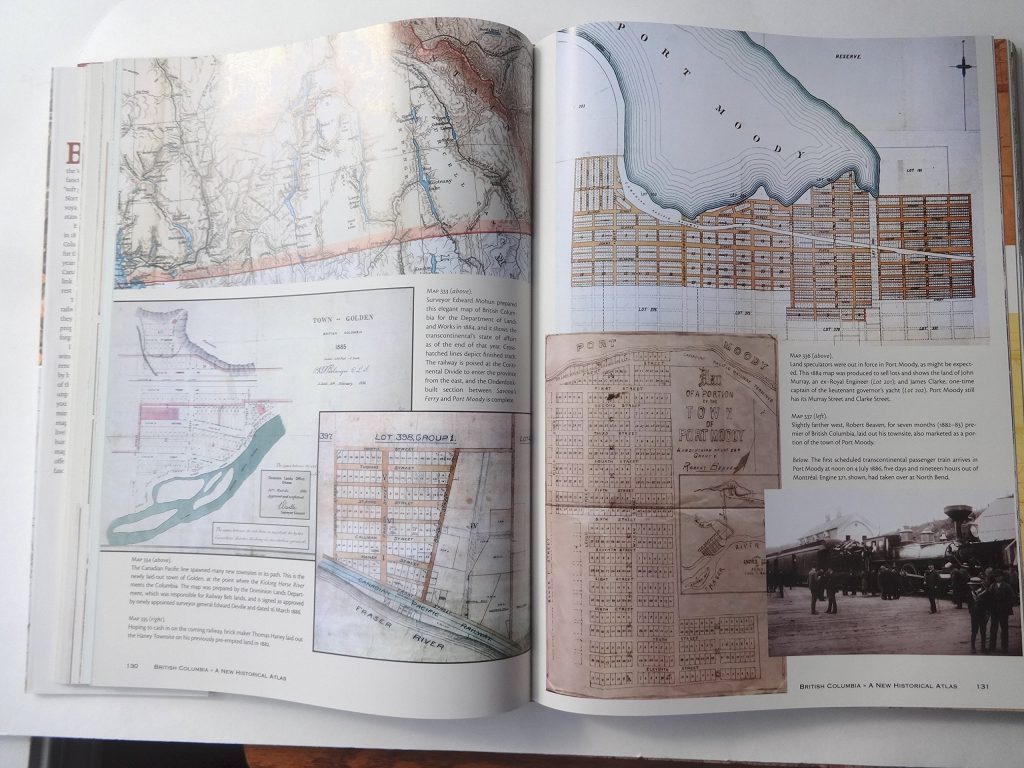Summaries of Talks and Field Trips - 2012
Glimpses of the Past through description, related books and internet connections
The Drive: A Retail, Social and Political History of Commercial Drive
These days East Vancouver’s Commercial Drive is a fiercely independent, wildly entertaining, multi-cultural, multi-ethnic and multi-sexual district with a reputation to match. From the days when natives sold its Grandview elk meat to settlers in Vancouver to a skid road running roughly along the present-day path of Commercial Drive below Hastings, and from the time it acquired the name “Grandview” for its great view drawing in early home builders, the area has been known for its self-reliance. Anchored by independent-minded people and independently-owned businesses, the area successfully fought to make sure it was not by-passed by transit routes planned for industrial corridors thus ensuring its healthy survival. It is this sense of independence that has made “The Drive” the vibrant artistic, creative and thriving community of today.
(See Jak King’s The Drive: A Retail, Social and Political History of Commercial Drive, Vancouver, to 1956, Vancouver: The Drive Press, 2011; The Encyclopedia of Commercial Drive, Vancouver: The Drive Press, 2012)
Exploring a Dead End: the Chinatown Tunnel Myth
Stories of tunnels beneath Chinatown persist in Vancouver. So do they in San Francisco, Portland, Seattle and many other cities. Even though joined basements and spaces under sidewalks exist, the rumoured tunnels don’t. They never have and are figments of over-active imaginations. So why have such stories embedded themselves so deep in our in our psyche that they have become the stuff of urban legend? Tunnels have long been part of the human experience and imagination. However, mix together the early marginalization of the Chinese, “eye witness” accounts of all things dark, hidden and nefarious, early pulp fiction, side show attractions, early film and you have a recipe for a persistent story which won’t go away.
Purdy’s Chocolate Factory Tour
Operating for over a century, Vancouver’s Purdy’s Chocolate has never compromised quality and tradition. The company has gone through three ownerships since its founder Richard Carmon Purdy set up shop on Robson Street in 1907. It was taken over in 1925 by the Forrester family, creditors who couldn’t bear to lose the product from the market. The owners since 1963 were at first a Wilson-Flavelle partnership but now it is an exclusively Flavelle family owned and operated business under the guidance of second generation daughter Karen.
Using smell, sight, sound, touch and taste as a guideline in its varied production from Truffles, to Mints and Melties to hedgehogs, Purdy’s chocolates are now sold in exclusive company outlets from BC to Ontario making it the premier chocolatier in Canada. Today, functioning out of its 5300 sq meter (57,000 sq. ft) factory site on Kingsway, the family-run Purdy’s supports not only sustainable and responsible cocoa farming but also local community events. (see also Purdy’s Chocolate website)
Creating Chuck’s Capstone: Publishing Chuck Davis’ History of Metropolitan Vancouver
Films become orphaned when they are stored away, forgotten or dumped. Luckily the CBC Archives has become a repository for films which help us retain the Vancouver narrative and sense of ourselves. Some private non-professional films exhibit a surprising degree of context and smooth narrative and tell complete stories. Other family pictures boldly show surprising bawdy scenes such as those from the PNE that no self respecting reporter would convey. Commercial films, such as one meant as a way to put food on the table while pursuing an artistic career, show a youthful humour and brilliance that few can match. Even an unlikely 1964 police surveillance film of a Vancouver Rolling Stones concert reveals something about ourselves. While meant to act as legal support should any possible charges of bad behaviour be laid, they are a window to the past in terms of dress, responses to cameras and the limits of acceptable public behaviour. Vancouver’s visual orphans tell us a lot about ourselves.
Vancouver’s Visual Orphans
Films become orphaned when they are stored away, forgotten or dumped. Luckily the CBC Archives has become a repository for films which help us retain the Vancouver narrative and sense of ourselves. Some private non-professional films exhibit a surprising degree of context and smooth narrative and tell complete stories. Other family pictures boldly show surprising bawdy scenes such as those from the PNE that no self respecting reporter would convey. Commercial films, such as one meant as a way to put food on the table while pursuing an artistic career, show a youthful humour and brilliance that few can match. Even an unlikely 1964 police surveillance film of a Vancouver Rolling Stones concert reveals something about ourselves. While meant to act as legal support should any possible charges of bad behaviour be laid, they are a window to the past in terms of dress, responses to cameras and the limits of acceptable public behaviour. Vancouver’s visual orphans tell us a lot about ourselves.
A Vancouver Romance: John and Ruth Morton
John Morton (1834-1912) was one of the Three Greenhorns who settled in 1862 on the claim now called Vancouver’s West End. After the CPR acquired much of their property, Morton moved to Mission, where, shortly after becoming a widower, married Ruth Mount (1848-1949). In 1888 John and Ruth went to England and where Ruth stayed overseeing their children’s education for four years. After her returning to Vancouver, in 1899, John and Ruth, set up housekeeping at 1151 Denman Street. John put money towards establishing the First Baptist Church at Burrard and Nelson in 1910-11 and, shortly before he died in 1912, agreed to fund a Baptist church (left) on East 27th Avenue in the name of his wife and love of his life, his wife Ruth. This structure memorialized their lifelong romance.
Vanishing Vancouver, 20th Anniversary edition
Some cities, particularly in North America, reinvent and transform themselves every decade or so because of a variety of factors: the limitations of space and the pressing needs of growth during booming economies, developers’ need in the name of progress to create profit opportunities, the dominance of the automobile, the lack of an embracing aesthetic, etc. On the other hand, some cities retain their heritage by default, slow economic growth, street widths and block and building sizes that don’t have to be readjusted to accommodate a new reality. Vancouver carries a little of each. Even with the city’s founding mythology of instant modernity (or replaceable heritage) that began in 1886 when the city burned down and was instantly rebuilt, some buildings have been better able than others to adapt to changing times.
Mountain View Cemetery Tour
Starting in 1905 in North Vancouver as the Wallace Shipyards, the Canadian company, Burrard Dry Dock Co. Ltd eventually build more than 450 ships during its lifetime. In 1928, the wooden St. Roch was built in North Vancouver by them. Also constructed were freighters, warships, navy repair ships as well as Coast Guard icebreakers, research vessels, patrol vessels and ferryboats. After going through various name changes the Burrard Dry Dock closed its North Vancouver operations in 1992 and is now a regional historic attraction. [see: Burrard Dry Dock Company History, Vancouver: J. S. Marshall & Co., 197_; George N. Edwards’ Waterfront to Warfront: Burrard Dry Dock Company during World War II, North Vancouver: 1995; Francis Mansbridge’s Launching History: the saga of Burrard Dry Dock, Madeira Park, BC: Harbour Publishing, 2002]
Long Time Indigenous History of the Vancouver Area
In what we know as the city of Vancouver today, many Coast Salish peoples lived, gathered a wide variety of resources and marked this place with habitation sites, resource use areas, place names, road networks, giving meaning to prominent landmarks. Meaningful indigenous deep history can be pieced together by a combination of oral tradition, the meaning of place names, archaeology, known food resources, geology and trade patterns.
The Coast Salish language can be rendered more understandable to non-indigenous people through a modified orthography to accommodate long strings of consonant clusters and glottal stops. Hence, we have the likes of Squamish [Skwxwú7mesh], Musqueam [Xwméthkwyiem] and Whoi Whoi [Xwáýxway].
Vancouver Noir
Expressing the cynicism and pessimism of the time, cinematic Film Noir of the late 1930s to 1950s, became “newspaper noir” in North America’s print media with the advent of the speed graphic press camera. The new device allowed reporters and photographers to record the immediacy of crime and corruption revealing a previously unseen fascination and moral ambiguity of people mesmerized by crime scenes. Vancouverites, who thought themselves above the crime of elsewhere, found that the graphic camera revealed themselves in a different light – they are actually fascinated with crime scenes and the trials of those involved. This period also revealed that the city was awash in other contradictions. Repressive liquor laws were applied unequally depending on class. Fear of juvenile delinquency resulted in youth being pathologized; as well, political parties and groups were marginalized in various moral panics. [see Belshaw and Purvey’s Vancouver Noir:1930-1960, Vancouver: Anvil Press, 2011]
To/From BC Electric Railway: 100 Years
The BC Electric Railway building at the corner of West Hastings and Carrall was once the main passenger transportation hub of Vancouver serving as the centre for the company’s Interurban system extension beyond the city. It saw thousands of people daily arriving and departing to and from the heart of the city from as far away as Chilliwack and Steveston. Operating from 1912 to 1954, its closure sparked the start of the decline of the East End. Conceived in 1911 when the city was exploding in growth, architects W. M. Somervell and J. L. Putnam put together a grand design for a BCER headquarters and depot based on their experience in Chicago and New York. The tram depot and loading platform, once located on the ground floor of the building and accompanied by newsstands, and coffee shops has been filled in. In spite of the repurposing of the ground floor, the building still maintains a sense of its stately past.
British Columbia: A New Historical Atlas
Historical atlases are a great way to gain insight into history. Through a combination of old maps, charts, photographs tied together with a written narrative, historical atlases lead to a greater understanding of a evolving geopolitical landscape of an area. Such is the case of Derek Hayes’ latest work focusing on the province from the beginning of recorded history.
From 1999, award winning historian Derek Hayes has produced 15 such atlases focusing on various areas in North America. (see: British Columbia: A New Historical Atlas (Vancouver: Douglas and McIntyre, 2012).


